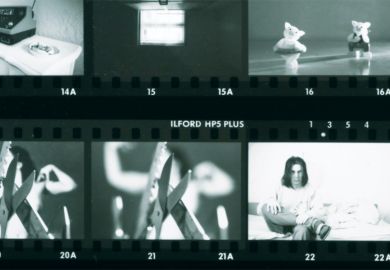At a time when scholars are under increasing pressure to engage the public, Martin Wood, professor of management at RMIT University in Melbourne, Australia, “cannot understand the resistance I’ve had within the academy” to research based on film, “one the most communicative technologies in our mass-media society”.
His own film Lines of Flight examines the post-industrial landscape of northern England and the men who go out solo climbing to escape the dreary repetitiveness of the rest of their lives. Although we hear from sociologists, we are also given a visceral sense of the dangers of trying to scale rock faces offering only the most precarious footing. What he was interested in, explained Professor Wood, was not just to use film to present his research findings but to explore “the possibility of film actually doing research through cinematic means”. Lines of Flight won several awards at film festivals and was also “published” in Altitude: An E-journal of Emerging Humanities Work.
Yet despite this precedent, Professor Wood has found “university managers, academic publishing companies and editorial boards” all pretty resistant to his attempts to offer films as submissions to journals. The only major exceptions seem to be outlets such as the Journal of Embodied Research, which describes itself as “the first peer-reviewed, open access, academic journal to focus specifically on the innovation and dissemination of embodied knowledge through the medium of video”.
A recent paper in Studies in Australasian Cinema by Smiljana Glisovic, Leo Berkeley and Craig Batty – all colleagues of Professor Wood’s at RMIT – agrees that there are currently “few outlets for the ‘publication’ of audio-visual and screen-based research works”.
Many of the challenges, the authors suggest, relate to peer review. They point to “the problem of identifying the research in the [film or video] work and the debate about whether this should be expressed through a written statement”. Yet given that there are now established standards for assessing papers submitted to journals, they believe that it should also be possible to create something similar for films.
An interesting example of how this plays out in practice is provided by 600 Mills, another film by Professor Wood, which considers how the “creative destruction” of capitalism has transformed the traditional garment district of Melbourne.
When this was submitted to the journal Prometheus, said general editor Stuart Macdonald, visiting professor at the University of Leicester’s School of Management, it was a first for them, but “it seemed incumbent on a journal specialising in innovation to take the submission seriously. Taylor & Francis, our publisher, was surprisingly enthusiastic and we toyed with various ideas, such as gluing CDs into every copy of the journal. In the end, we settled for a printed commentary to satisfy the traditional requirements of an academic journal, linked to an online film, the whole lot to be open access.”
Peer reviewers, however, felt that “the film could not start by intriguing its audience. That might be appropriate in a film where artistic considerations are paramount, but an academic film had to have something akin to the introduction, literature review and methodology sections of a written academic paper.”
Subject to revisions, the film and commentary will both be “published” by Prometheus. Journals can no doubt expect further similar submissions.
Register to continue
Why register?
- Registration is free and only takes a moment
- Once registered, you can read 3 articles a month
- Sign up for our newsletter
Subscribe
Or subscribe for unlimited access to:
- Unlimited access to news, views, insights & reviews
- Digital editions
- Digital access to THE’s university and college rankings analysis
Already registered or a current subscriber?










